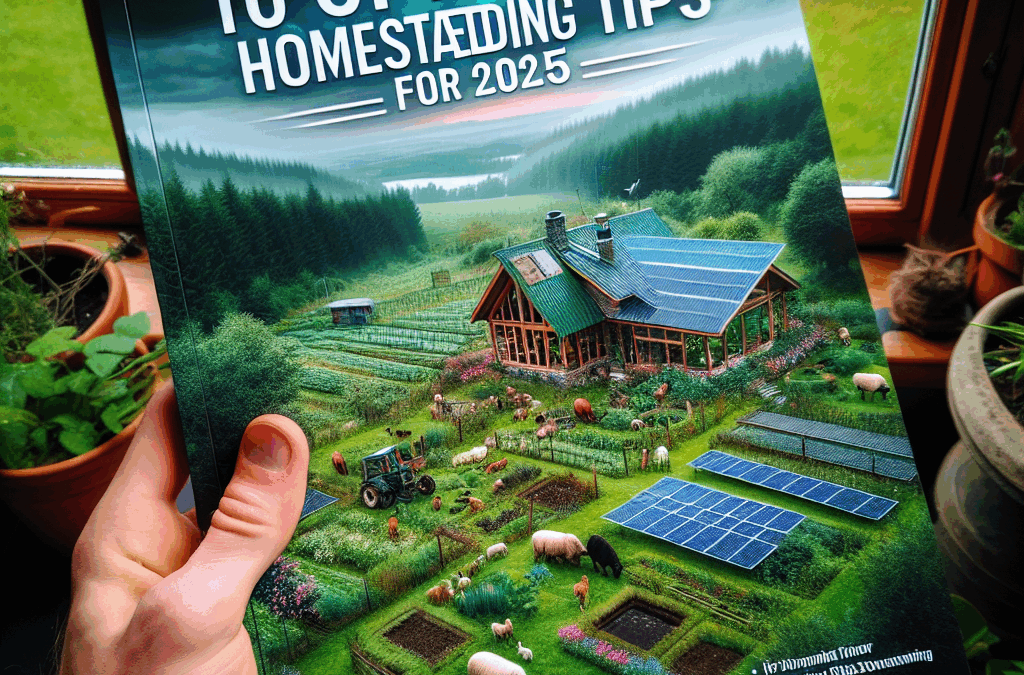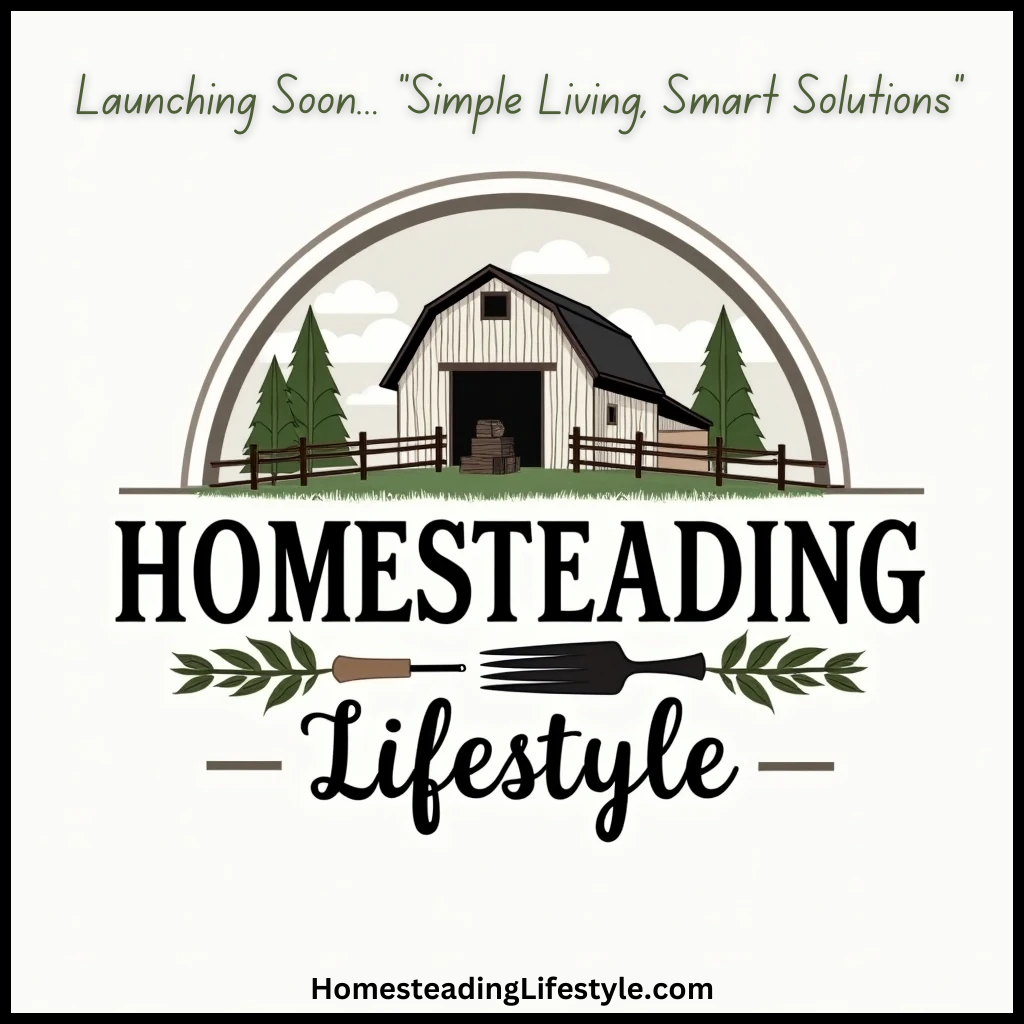Table of Contents
- 1. Harness Solar Power Effectively
- 2. Master Water Collection and Purification
- 3. Grow Sustainable Food Sources
- 4. Install Reliable Off-Grid Heating Solutions
- 5. Optimize Your Homestead Layout
- 6. Develop Self-Sufficient Energy Systems
- 7. Efficient Waste Management Systems
- 8. Stay Connected with Off-Grid Communication
- 9. Prepare for Emergencies and Resilience
- 10. Build a Supportive Off-Grid Community
1. Harness Solar Power Effectively
Understanding Solar Panel Technologies for 2025
Solar energy remains the cornerstone of off grid homesteading tips for sustainable living in 2025. Advances in photovoltaic technology, such as high-efficiency monocrystalline panels, now allow homesteaders to maximize energy output even in limited space. For example, adopting bifacial panels can increase energy generation by up to 20% compared to traditional panels, making the most of your available sunlight.
When selecting solar systems, consider factors like wattage requirements, tilt angle, and shading. Proper placement ensures optimal sunlight exposure throughout the year, especially as daylight hours shift between seasons. I recommend using solar trackers if space and budget permitâthey can boost production significantly, especially in regions with variable sunlight.
Regular maintenance is essential to keep solar systems running at peak efficiency. Cleaning panels to remove dirt and debris, inspecting wiring, and replacing outdated components can extend your system’s lifespan. For 2025, integrating smart monitoring systems provides real-time data on energy production, helping you identify issues early and optimize usage.
Maximizing Energy Storage and Backup Options
Energy storage remains critical for off grid homesteaders aiming for reliability. Lithium-ion batteries are now the preferred choice for their longevity and high capacity. Investing in a robust battery bank ensures you have power during cloudy days or extended overcast periods.
In addition to batteries, consider integrating backup generators or alternative systems like wind turbines or micro-hydro power. Diversifying your energy sources enhances resilience against unforeseen circumstances. Strategically sizing your storage needs based on household consumption patterns can save costs and prevent shortages.
Combine efficient energy use practices with your solar setup by installing energy-efficient appliances, LED lighting, and smart controls. This approach reduces overall power demand, allowing your off grid system to support your homesteading lifestyle effectively.
2. Master Water Collection and Purification
Designing Effective Rainwater Harvesting Systems
In 2025, rainwater harvesting is more vital than ever for off grid homesteaders. Properly designed rainwater collection systems can provide a significant portion of your household and gardening needs. Positioning gutters and downspouts to maximize catchment area, along with large storage tanks, ensures a reliable supply during dry months.
Consider integrating first-flush diverters to prevent debris and contaminants from entering your storage tanks. Covering tanks with secure lids reduces mosquito breeding and evaporation loss. Automated systems can monitor water levels, alerting you to capacity issues in real time and streamlining maintenance.
Local regulations and water rights should guide your harvesting plans. In some regions, permits are needed for large storage tanks. Always ensure your system complies with safety standards and best practices to maintain water safety and quality.
Water Purification Techniques
Clean water is essential for health and sustainability on your homestead. In 2025, advanced purification methods like UV sterilization and membrane filtration offer effective solutions. UV systems can instantly disinfect water, killing bacteria and viruses without chemicals.
For cases where chemical removal is necessary, activated carbon filters are highly effective, removing pesticides, odors, and organic compounds. Combining multiple purification steps ensures your water is safe for drinking, cooking, and laundry.
Regular testing of water quality, using simple test kits, helps you monitor purity levels. This proactive approach prevents health issues and maintains trust in your off grid homestead water system.
3. Grow Sustainable Food Sources
Adopting Permaculture Principles
Growing your own food is a cornerstone of off grid homesteading tips. Permaculture design principles in 2025 can help you create productive, self-sustaining gardens. Mimicking natural ecosystems ensures resilience, diversity, and high yields with less intervention.
Implementing companion planting, mulching, and water-smart irrigation techniques reduces resource use and minimizes weeds. For example, planting nitrogen-fixing legumes alongside vegetables enhances soil fertility naturally, cutting down on external inputs.
Incorporating animals such as chickens, goats, or bees not only provides protein and pollination but also enriches the ecosystem. Ensuring ethical and sustainable practices maintains the health of your homestead over generations.
Utilizing Advanced Growing Techniques
Hydroponics and aquaponics systems are increasingly popular for off grid living in 2025. These soil-less methods allow year-round cultivation, saving space and water while boosting productivity. For instance, aquaponics combines fish farming with vegetable cultivation, creating a mutually beneficial cycle.
Vertical gardening and greenhouse extensions maximize small land plots, enabling efficient use of limited space. Smart sensors and automated watering systems can optimize plant growth, conserve resources, and reduce labor.
By integrating cutting-edge growing methods, you’re building a resilient, food-secure homestead that adapts to changing environmental conditions and market demands.
4. Install Reliable Off-Grid Heating Solutions
Choosing the Right Heating Equipment
In 2025, efficient heating is crucial to maintaining comfort on your off grid homestead during cold months. Wood stoves, rocket mass heaters, and solar thermal systems are key options. Wood remains popular due to its abundance and low cost if you have access to sustainable fuel sources.
Rocket mass heaters are highly efficient, using minimal wood while providing ample heat. They can also double as indoor cooking stoves, saving space and resources. Solar thermal systems, including evacuated tube collectors, can preheat water, reducing reliance on wood or other fuels.
Prioritize safety and proper ventilation when installing heating systems. Regular maintenance and inspections are necessary to prevent fire hazards and ensure efficiency, especially as new advancements emerge in 2025.
Strategies for Efficient Heating Management
To maximize the lifespan and effectiveness of your heating solutions, insulate your home thoroughly. Proper wall, roof, and window insulation reduces heat loss by up to 50%, significantly decreasing fuel consumption.
Using programmable thermostats and zone heating allows targeted warmth, conserving energy. Additionally, designing your homestead layout to take advantage of passive solar gains, such as placing living spaces on south-facing walls, can keep your home warmer naturally.
Incorporating renewable heating sources supports your goal of off grid sustainability, saving money and reducing environmental impact over time.
5. Optimize Your Homestead Layout
Designing for Efficiency and Sustainability
In 2025, a well-planned homestead layout is a game-changer. Position essential elements to minimize walking distances and energy use. For example, situate the garden, water source, and energy systems within easy reach of your main living area.
Creating zones for different functionsâliving, gardening, livestock, and storageâimproves overall efficiency. Using permaculture principles, the placement of trees, crops, and animals should complement each other, creating a self-sustaining ecosystem.
Accessibility and future expansion should also be considered. Modular designs and designated infrastructure spaces make it easier to upgrade systems and add new features as your homestead grows.
Implementing Permaculture Design Principles
Permaculture offers guidance on maximizing productivity while minimizing effort. Key principles include stacking functions, using edge zones, and designing for water flow management. These strategies help conserve resources and increase resilience.
For example, swale systems contour the land to prevent erosion and improve water absorption, reducing irrigation needs. Companion planting and integrated pest management reduce chemical use and promote biodiversity.
By thoughtfully optimizing your homestead layout, you create a sustainable environment that supports your lifestyle now and into 2025 and beyond.
6. Develop Self-Sufficient Energy Systems
Building a Complete Off-Grid Energy Infrastructure
Self-sufficiency in energy is a cornerstone off grid homesteading tips for 2025. Combining solar, wind, and bioenergy creates a resilient, reliable power supply. For example, installing a small wind turbine can complement solar panels during winter months when sunlight is limited.
Biogas digesters powered by organic waste offer a renewable source of cooking fuel and fertilizer, enhancing sustainability. Proper sizing and integration of these systems ensure continuous energy availability, reducing reliance on external sources.
Monitoring and controlling your energy production through smart home systems increases efficiency. Regular maintenance of all components prolongs lifespan and ensures stable energy backup during peak demand or system failure.
Embracing Innovative Technologies
Emerging technologies in 2025 include advanced energy management systems that optimize production and usage automatically. These systems analyze energy flows, predict consumption patterns, and adjust settings for maximum efficiency.
Energy storage improvements, like solid-state batteries, are now safer and more efficient, offering longer lifespan and faster charging times. Adding energy audits to your routine can help identify opportunities for reducing consumption and enhancing system performance.
Building a self-sufficient energy system allows for independence and sustainability, making your off grid homestead truly autonomous in 2025.
7. Efficient Waste Management Systems
Implementing Composting and Recycling Solutions
Waste management in off grid homesteading tips revolves around reducing, reusing, and recycling. Composting organic waste transforms kitchen scraps and yard debris into rich soil, closing nutrient loops naturally. In 2025, enclosed compost bins with aeration improve odor control and decomposition speed.
Greywater recycling systems reuse water from sinks, showers, and laundry to irrigate non-edible plants. Proper filtration and occasional maintenance ensure safety and environmental compliance. This system conserves water and minimizes waste discharge, especially important when water resources are limited.
Recycling programs and repurposing materials like pallets, containers, and scrap metal reduce reliance on external waste disposal, strengthening your homesteadâs sustainability profile.
Managing Human Waste Sustainably
Eco-friendly sanitation practices include composting toilets and biogas toilets, which turn waste into valuable resources. These systems are zero-export, eliminating sewage costs and environmental impacts.
Proper design and regular maintenance are critical to avoid health hazards. Composting toilets, for example, require a balance of carbon and nitrogen materials and suitable aeration for safe composting.
Smart waste management practices will be essential for off grid homesteaders in 2025, ensuring health safety and environmental responsibility.
8. Stay Connected with Off-Grid Communication
Choosing Reliable Communication Devices
Staying connected is not only about social contactâit’s vital for safety and information sharing. In 2025, satellite communication devices such as Iridium or Globalstar enable reliable connectivity even in remote areas. These devices are compact, easy to use, and provide voice and data services.
Internet options include long-range Wi-Fi antennas, cellular boosters, and emerging satellite internet services like Starlink, which are becoming more affordable and accessible. Reliable connectivity allows for remote work, weather updates, and staying in touch with family and community.
Investing in backup power, such as portable solar chargers or hand-crank units, ensures your communication devices stay operational during power outages.
Using Technology for Efficient Homesteading
Apps and smart home systems can help you monitor weather forecasts, manage energy use, and control irrigation remotely. These tools streamline management and improve efficiency. For example, soil moisture sensors can automatically trigger irrigation, conserving water and optimizing crop growth.
Educate yourself on cybersecurity practices to protect your data and devices, especially when using satellite or public networks. Building a reliable off-grid communication system enhances safety, connectivity, and the overall success of your homesteading lifestyle in 2025.
9. Prepare for Emergencies and Resilience
Building a Homestead Emergency Kit
Emergency preparedness is a key off grid homesteading tips for 2025. As extreme weather events become more frequent, assembling a comprehensive kit with first aid supplies, food, water purification tools, and backup power sources is essential. Regularly update and review your kit to ensure readiness.
Include communication devices, thermal blankets, and essential tools like multi-tools and fire starters. Keep important documents protected in waterproof containers and consider having emergency plans communicated with neighbors or local groups.
Practicing drills and preparedness mindset can significantly improve your resilience, helping you respond quickly and effectively during crises.
Building Resilience Through Community Networks
Connecting with nearby homesteaders or off grid communities creates a support network for sharing resources, skills, and safety information. Establishing local barter and cooperation agreements enhances collective resilience.
Participate in online forums and local meetups to exchange best practices, know-how, and emergency support strategies. Building such networks fortifies your homesteadâs capacity to withstand unforeseen challenges in 2025.
A resilient homestead isn’t just about suppliesâit’s about community, preparedness, and adaptive strategies that keep everyone safe and thriving.
10. Build a Supportive Off-Grid Community
Networking and Sharing Resources
Building community is one of the most valuable off grid homesteading tips for 2025. Sharing tools, seeds, skills, and labor reduces individual costs and increases resilience. Organize local workshops or cooperatives to strengthen bonds and knowledge sharing.
These networks can provide mutual support during emergencies, help with large projects, or facilitate resource exchanges like seed saving and livestock sharing. Establishing clear communication channels such as message boards, apps, or regular meetings ensures everyone stays connected.
Embracing a community approach also fosters social well-being, reduces isolation, and creates opportunities for collective growth and innovation on your homestead journey.
Collaborating for Sustainability and Growth
Joint ventures such as bulk purchasing of materials or shared renewable systems can lower costs and improve efficiency. Participating in local farmers markets or barter systems enhances self-sufficiency and community ties.
Working together to maintain infrastructure, coordinate crop planting, and share knowledge accelerates progress toward sustainable living in 2025. Remember, building a supportive network is a critical off grid homesteading tip for long-term success and happiness.






